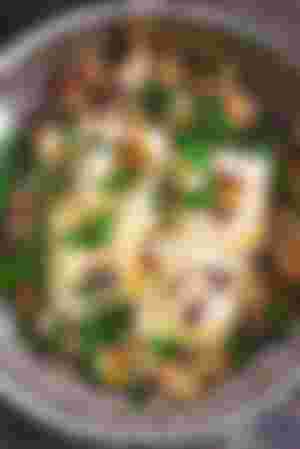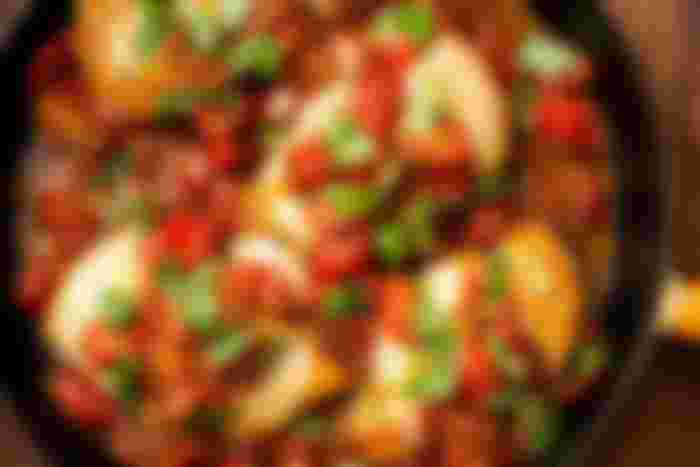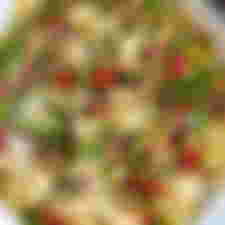Italian recipe: Italian food

Ingredients of Italian food are common to foods from Italy. It has evolved through

centuries of social and economic change, which has extended to archeology.

Significant changes have taken place with the discovery of the New World and the discovery of the potato, tomato, bell peppers, corn and sugar beet, which introduced this number in the late 18th century. Italian cuisine is known for its regional diversity, especially between the north and south of the Italian peninsula. It offers an abundance of flavors, and has been one of the most popular and copied in the world. It mainly affects most of the cuisine in the United States and around the world.

Italian cuisine is usually characterized by its simplicity, many dishes have only two to four main ingredients. Italian dogs depend on the quality of the ingredients rather than the orderly preparation. The ingredients and dishes vary by region. Many fingers that were once regional, ignited with diversity across the country.

The history of Italian food is the oldest in Europe. In the first century, a copy of a cookbook presumed to have been written by a wealthy Roman man of the Tiberius period left in the manuscript. It is also known from the literature of the time that the life of an aristocrat was exhausted. In the eleventh century, people migrated from the Byzantine Empire to Venice. In the sixteenth century, when Caterina de Medici was married to Henry II of France, it was said that she not only adopted Cook, but also introduced the Florentine dining culture that flourished in the French court. Thus, Italian cuisine has played a leading role in Western cuisine and has since influenced the dining culture of European countries.

Today's Italian cuisine was systematically adopted by "Cooking Science and Food" published in 1891 by P. Artuzi. After the Middle Ages, Italy was divided into numerous smaller countries, such as the Pope, the Kingdom, the City State, the Grand Duchess, and the Count, and with the exception of a few city-states and disadvantaged classes, cooking was built on a self-sufficient economy. Combined. In 1861, when the modern ified state was established, the environment of the Middle Ages collapsed together due to the effects of the Industrial Revolution.

At this time, the Artuzi local cuisine was limited to different regions of Italy, soups, mainstays (generic names for pasta, polenta, risotto, etc.), horse d'ovre, sauces, eggs, puff pastries, fillings, deep-fried, boiled, cooked, cold modern Italian The foundation of cooking was established by arranging products, vegetables, fish dishes, pottery, confectionery, torque, syrup, preserved food, liqueur, ice cream and other items.

Its cuisine is also diverse due to its historical background and geographical location in the Mediterranean since the Roman Empire. In Europe, for example, bread is always eaten except in cases like the Spanish pailar. Pasta, risotto (cooked rice in bole with onion and butter), polenta (corn cooked in bole over the fire).




Rice is produced in Lombardy and Piedmont, which is in the middle of the Po River, and maize is grown in Opalu, in northern Italy, so risotto and polenta dishes are produced in northern Italy. Spaghetti and macaroni dried pasta, on the other hand, was made as a regular food in southern Italy because hard wheat farms were once widespread in southern Italy and pasta provided natural drying conditions before machine production in the Campania region around Naples.


It is derived from what it was. Developing dried pasta is unimaginable without successful breeding of tomatoes for sauce in Naples. With the advent of tomato sauce, presumably in the 17th and 18th centuries, dried pasta dishes quickly spread to the central and northern regions. Tomato sauce is also a major contributor to the spread of when and how pizza was made, but so-called pizza sauce with parsley, anchovies and olive oil and boiled tomatoes in oregano, mozzarella cheese (added to buffalo buffalo) <naples style pizza Milk cheese) has attracted the attention of people in southern Italy, especially in Campania. Handmade pasta, dating back to the 14th century, is still eaten in northern Italy, especially by Emilia Romgana. Basically, the flour is simply powdered with eggs, cut into a thin plate with a thickness of about 1 mm, cut in different ways, float soup, fillings, grachin and other uses. There are many seafood soups in Italy similar to the French Bolbais and other dishes using shrimp, crab, squid, octopus, clams, oysters, sardines and tuna. Probably the most seafood in Europe

Italy's wine and olive oil is also the world's leading country. Edible oil is consumed as olive oil in southern Italy, lord and olive oil in the middle, butter, lard and olive oil in the north, but the vineyards are almost Italianly distributed from Piedmont to Sicily in northern Italy. ,

It can be said that these natural products form the Italian culinary culture. Compared to the unification of French cuisine, Italian cuisine lags far behind, and in 19th-century France the great luxury of flourishing cooking is not seen. It seems that Italian cuisine has a feature that is relatively changeable

















breeding of tomatoes for sauce in Naples. With the advent of tomato sauce, presumably in the 17th and 18th centuries, dried pasta dishes quickly